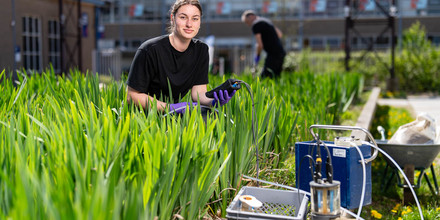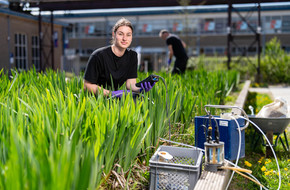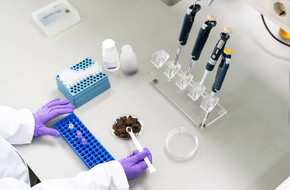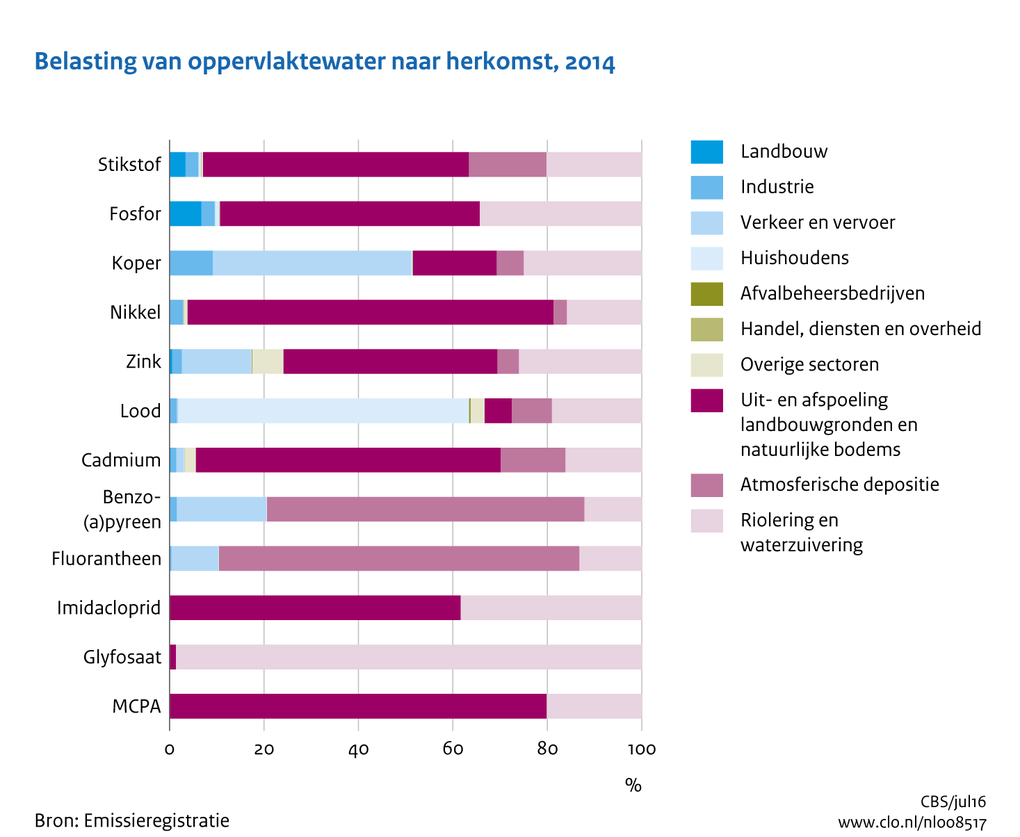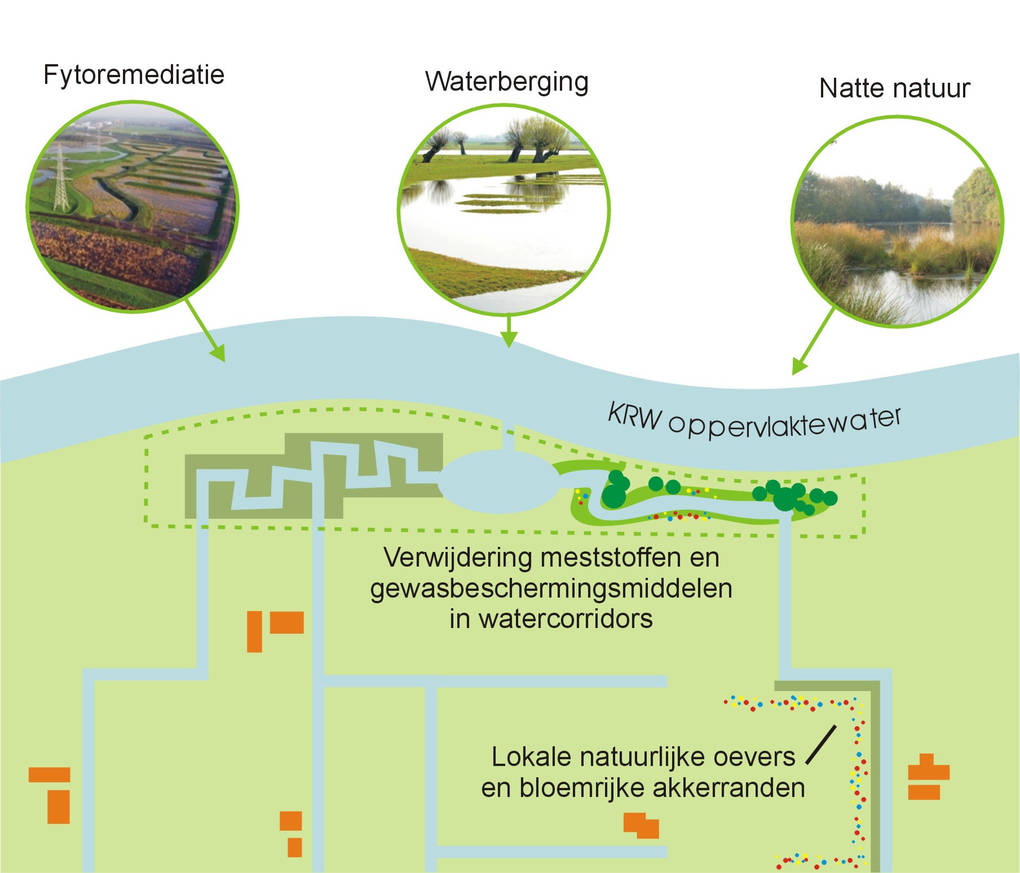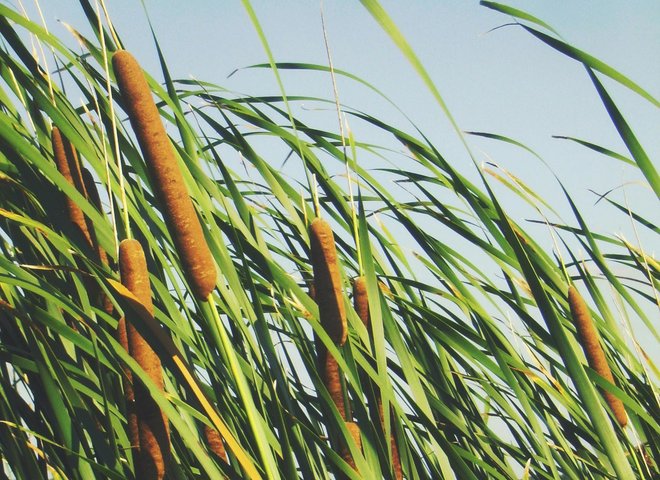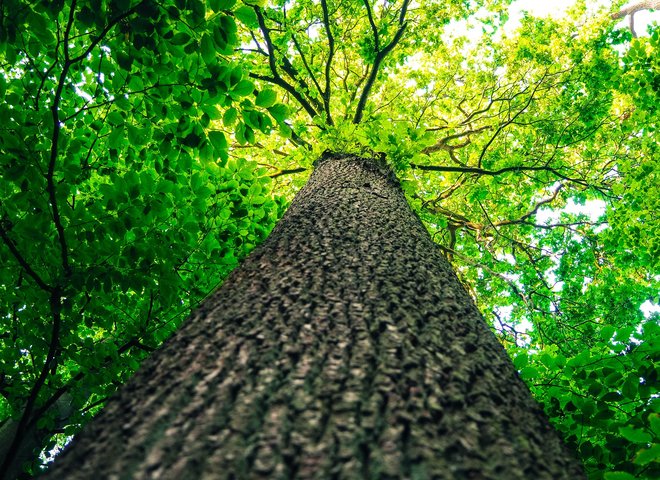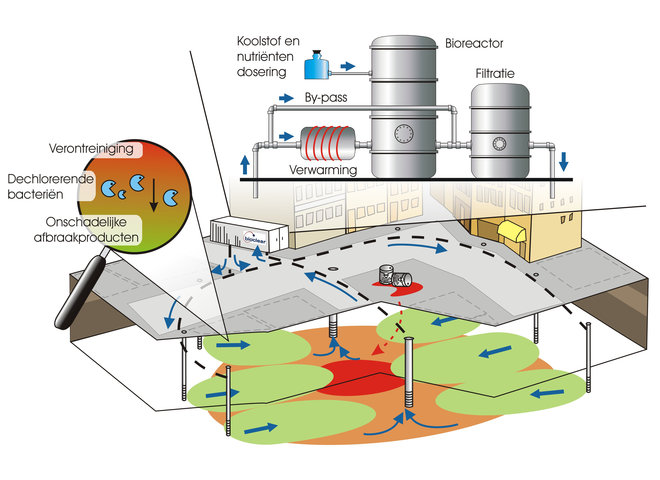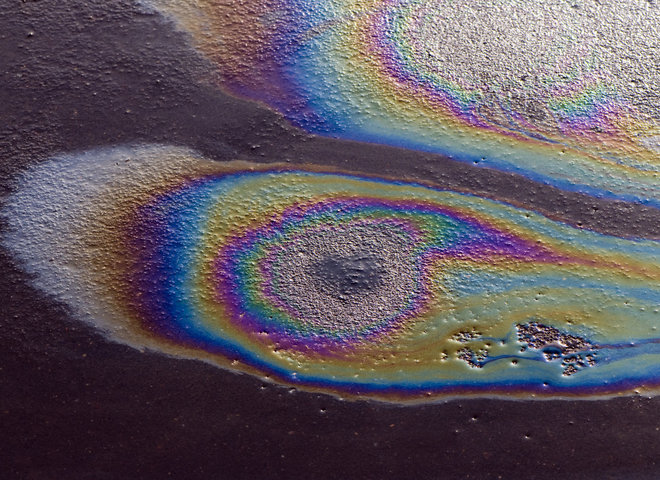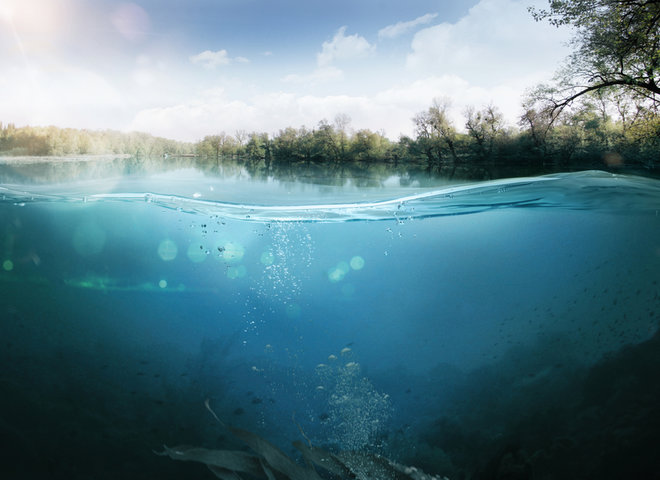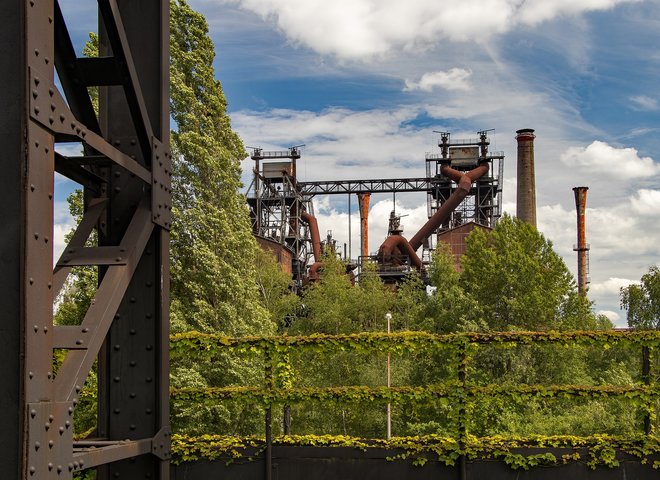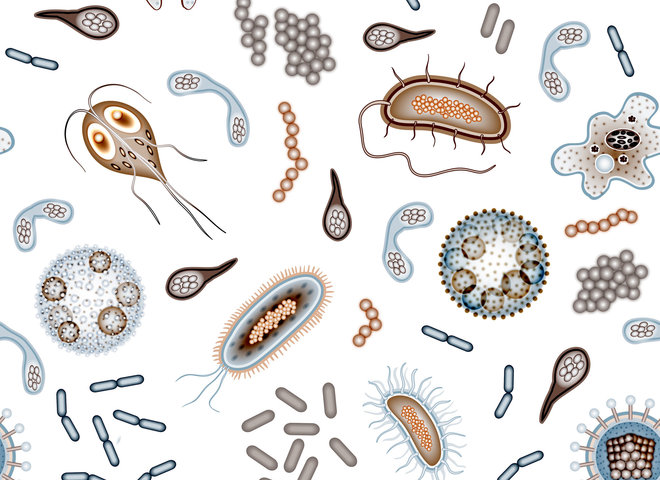Water corridors: part of an area-based solution for nitrogen reduction
In many countries around the world, water and soil are constantly being polluted by the run-off of harmful substances from industry, agriculture and households, as well as by pollution brought in by rainwater. More and more, we read alarming reports about substances such as PFAS, medicine residues and pesticides, and about the declining numbers of insects and our (meadow) birds.
Research has shown that when nitrogen norms are exceeded, the consequences are enormous for the biodiversity in the protected Natura 2000 areas in Europe. A ruling by the Council of State in 2019 in the Netherlands regarding compliance with nitrogen norms was immediately felt in our society and led to the so called ‘nitrogen crisis’. Besides looking for solutions to deal with these problems at their source, there are fortunately ways of tackling existing problems, by using the power of nature!
Water corridor as part of an area-oriented, climate-adaptive solution to a complex problem
An oasis of green with beautiful walking and cycling paths, along pools with rustling reeds, surrounded by flowering plants, bushes and trees. You might not expect it, but such a green, biodiverse zone can be used to reduce the discharge of excess nutrients and environmentally harmful substances from agricultural areas, industry and sewage treatment plants. We refer to such an area as a water corridor. Based on an eco-engineering design, a water corridor is set up in such a way that pollutants, whether or not after temporary buffering in the corridor, are broken down as much as possible. Scientific research has shown that specific trees and plants, fungi and bacteria can play an important role in breaking down pollutants. By applying this natural degradation, a well-designed water corridor can treat polluted water and have a regenerative effect on the soil and water system.


